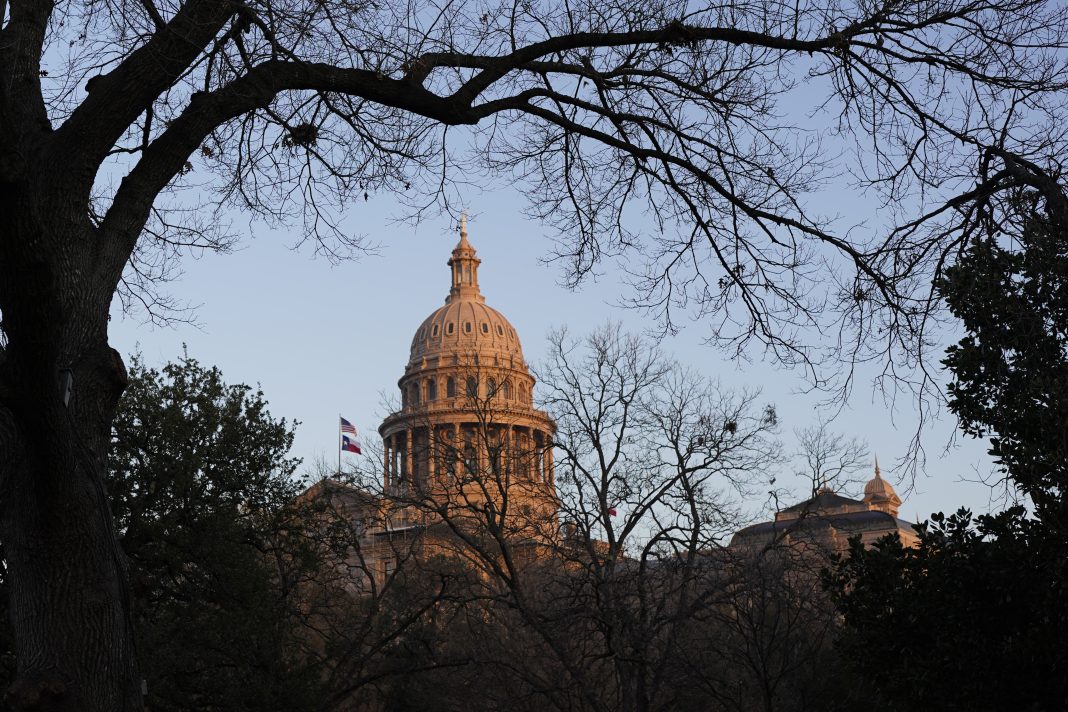We’re working with the state elected officials to put us in the right state departments and the right directors to be able to relay the message and the needs of the Rio Grande Valley.
Dozens of officials from the Rio Grande Valley descended upon Austin this week for what has become a much-anticipated tradition at the state capitol — RGV Days — when local leaders get a unique opportunity to sit shoulder-to-shoulder with state lawmakers.
Weslaco was no exception as the city sent a large delegation to meet not only with members of the Texas House and Senate, but also with directors from some of the state’s most powerful agencies in order to lobby for the Mid-Valley’s most urgent needs.
“I think, as a region, we’ve put a lot of effort into this day,” Weslaco City Manager Martin Garza Jr. said via phone while he and Mayor David Suarez were between meetings with Austin’s movers and shakers Wednesday afternoon.
And those efforts are paying off.
“Our needs are being heard. We’re working with the state elected officials to put us in the right state departments and the right directors to be able to relay the message and the needs of the Rio Grande Valley,” Garza said.
For Weslaco, drainage, infrastructure and transportation top those needs.
By Wednesday, Weslaco had already had sit-downs with the Texas Water Development Board, the Department of Transportation and the General Land Office, Suarez said.
Another meeting — with state Rep. Armando “Mando” Martinez, D-Weslaco, and Nim Kidd, director of the Texas Division of Emergency Management — is slated for Thursday.
DRAINAGE & INFRASTRUCTURE
“We met with the Texas Water Development Board… with the executive director, Jeff Walker, to give us an update on Kansas Avenue, the Torritos project,” Suarez said, referring to a $6.42 million drainage project south of the expressway near downtown.
Weslaco is funding the project via a 70/30 split of loans and grants from the agency, the mayor explained.
The TWDB is perhaps the largest funder of such drainage and flood mitigation projects throughout the state. It does so by offering municipalities grants and zero-interest loans.
The city also updated the agency on its plans to build a multi-purpose regional detention facility, or RDF, between two schools along Sugarcane Drive.
The project, which is being done in partnership with the school district, will create an 11-acre RDF in the land that sits between Cleckler-Heald Elementary and Beatriz Garza Middle School.
When not filled with water, the space will provide residents with space to play sports, or to go for a walk.
TWDB funding is key to accomplishing the project, Suarez said.
Weslaco leaders also met with new Land Commissioner Dawn Buckingham to reiterate their support for the Homeowners Assistance and Reimbursement, or HARP, program, which helps residents rebuild after natural disasters.
In the Mid-Valley, homeowners have been able to use HARP to recover after the summer floods of 2018 and 2019.
We have a lot of faith that there’s a lot of good things coming to the Rio Grande Valley and we’re very excited about it.
TRANSPORTATION
When Garza and Suarez met with Dan Harmon, TxDOT’s aviation division director, it was to talk about plans to expand the Mid Valley International Airport — including by building more hangars, updating the facility’s lighting and fortifying perimeter security.
Weslaco hopes to get funding to fence the airport perimeter for security purposes, the mayor said. The city also hopes to install LED lighting — becoming the first general aviation airport in the Valley to do.
But Garza and Suarez also wanted to propose an idea to use the airport as a staging area for regional emergency response.
“We’re talking about trying to convince them to build a warehouse there at the Mid-Valley airport — a regional distribution center for state supplies and (a) cache,” the mayor said.
Already, several state and federal agencies — including TxDOT, U.S. Border Patrol and the Texas National Guard — have chosen to locate their regional headquarters in Weslaco, close to the airport.
So, too, has the private sector.
H-E-B, which operates dozens of grocery stores throughout the four counties, has not only housed its main distribution warehouse in Weslaco, but its disaster response center, as well.
All that makes the airport an ideal location for a state emergency distribution center.
City leaders hope one of the agencies that could take advantage of such a warehouse is the Texas A&M Task Force 1.
Based out of College Station, the task force works under TDEM and in partnership with FEMA to conduct urban search and rescue.
“If we would have that warehouse there in Weslaco it would be a benefit for the entire region to be able to land there and be able to participate in any type of distribution and assist us in any type of emergency,” Garza said.
Ultimately, the city of Weslaco’s legislative goals dovetail with more regional priorities — something which makes an event like RGV Days so important.
With leaders from all over the Valley in Austin at the same time, it helps the region present a unified voice, even while they advocate for their individual cities.
“We have a lot of faith that there’s a lot of good things coming to the Rio Grande Valley and we’re very excited about it,” Garza said.
To find a comprehensive list of bills filed — and the status of those bills — visit MyRGV.com and click the 88th Texas Legislative Session tab, which has an interactive spreadsheet and a comprehensive list of AIM Media Texas’ legislative coverage.
RELATED READING:
Harlingen, San Benito officials join area leaders meeting with state lawmakers




